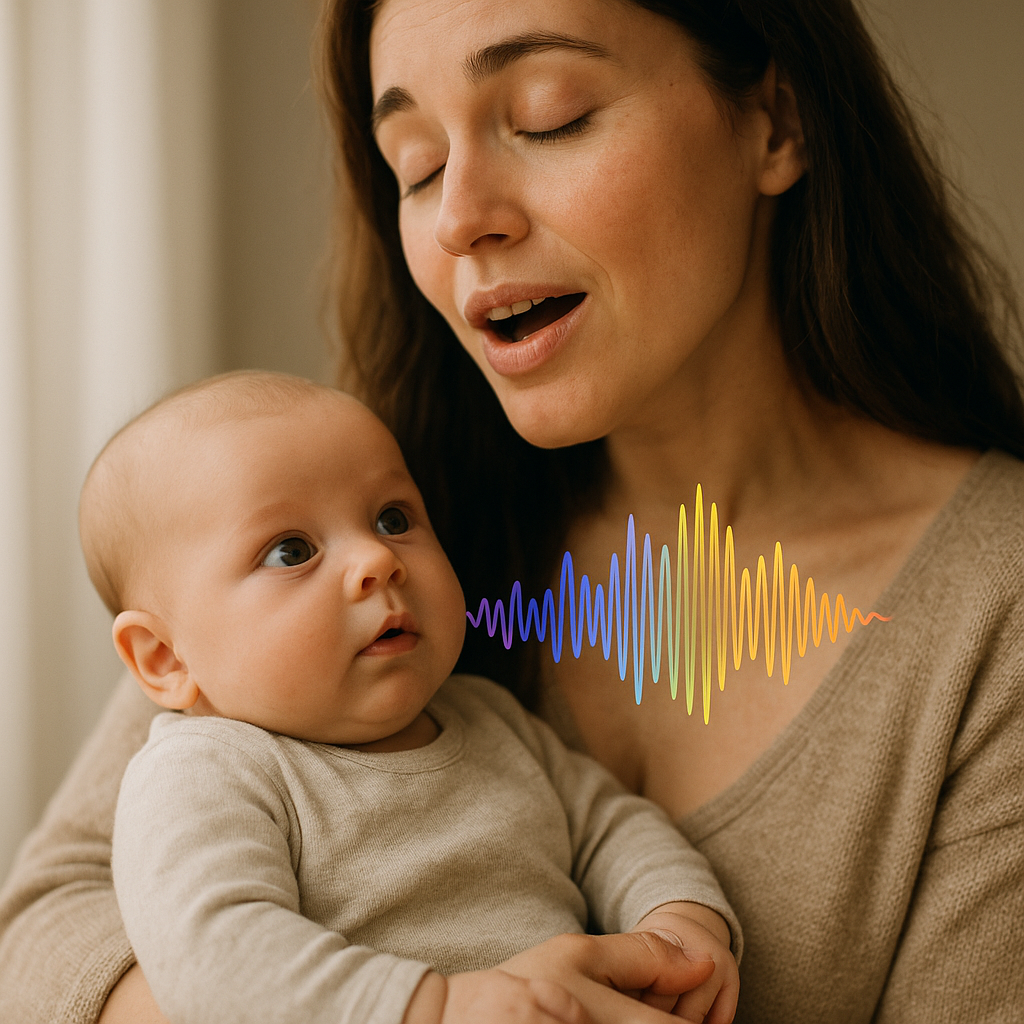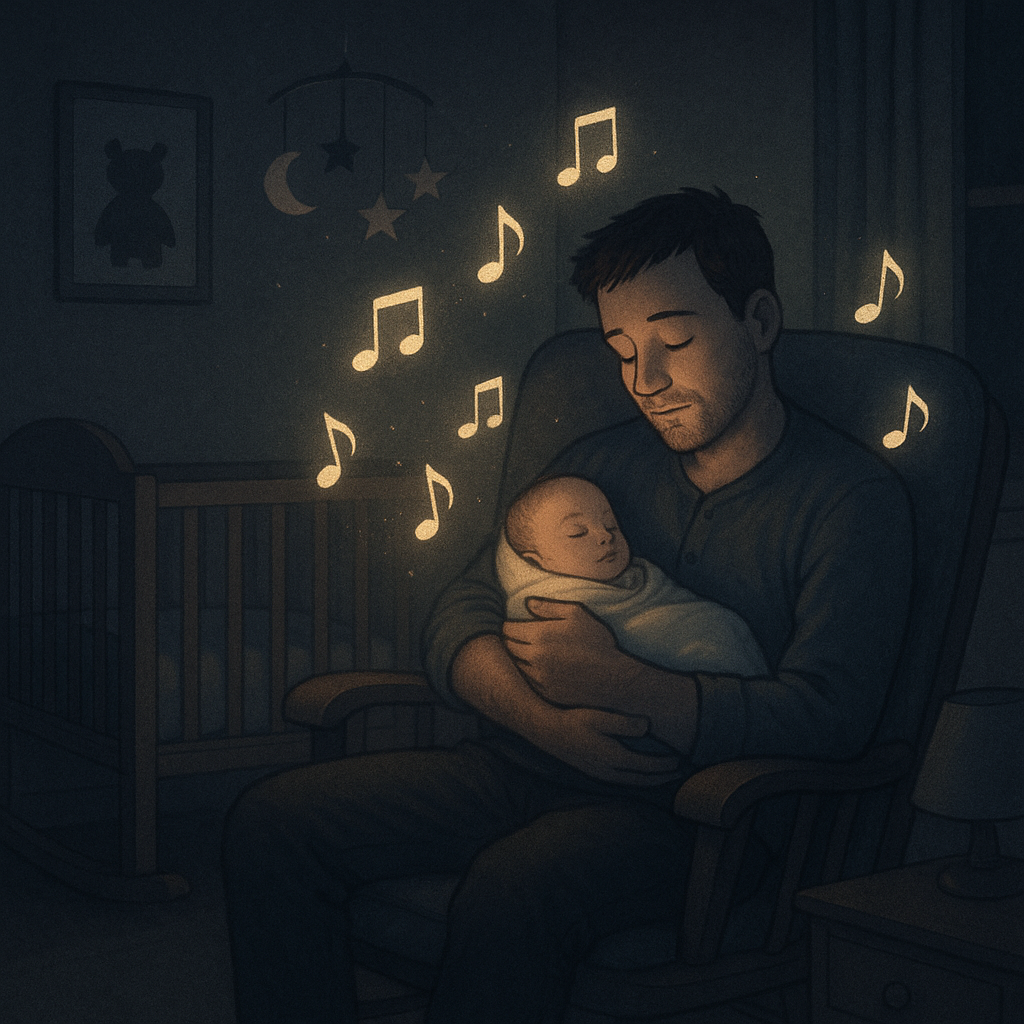Picture your baby’s brain sparkling like a fireworks show with every line of “Twinkle, Twinkle, Little Star.” In the first three years, their brain forms over one million neural connections per second, building the foundation for language, movement, and emotional growth. Simple, rhythmic nursery rhymes are one of the easiest, most affordable ways to supercharge this development. Your voice—whether on-key or not—ignites neural pathways, fosters bonding, and sets the stage for lifelong learning.
- How does singing nursery rhymes stimulate a baby’s brain?
- Why does the brain grasp rhythm before words?
- How do nursery rhymes deepen bonding and calm big feelings?
- Which skills grow with action songs and fingerplays?
- When should you start—and how much singing is enough?
- Do multilingual rhymes and screen videos work the same way?
- How can busy parents weave nursery rhymes into everyday life?
- Myth-busting: What if I can’t sing—or hate old rhymes?
- Your Top Questions, Answered
- Final Thoughts
How does singing nursery rhymes stimulate a baby’s brain?
Singing nursery rhymes synchronizes your baby’s brain to rhythm, strengthening neural pathways for language and memory. The University of Cambridge’s BabyRhythm study found that a two-month-old’s brain response to rhythmic speech predicts vocabulary size at 14 months, highlighting the power of rhythm in early learning. Each beat, pitch change, and repeated word trains auditory circuits to detect patterns, making it easier for your baby to decode speech later.
Nursery rhymes also trigger dopamine, the brain’s “pay-attention” chemical, which enhances learning retention. Music engages both brain hemispheres, fostering cognitive “cross-talk” that supports problem-solving, emotional regulation, and even early math skills. For example, the repetitive structure of “Baa, Baa, Black Sheep” helps your baby anticipate patterns, laying the groundwork for logical thinking.
To explore more music benefits, visit Music for Babies: Does It Boost Brain Development?.

Why does the brain grasp rhythm before words?
Your baby’s brain locks onto rhythmic patterns months before understanding individual words. EEG scans show mirror neurons firing in sync with external rhythms as early as 2 months, priming the motor cortex for babbling and speech. Rhymes like “Row, Row, Row Your Boat,” with its strong-weak syllable stress (ROW, row, ROW), naturally teach word boundaries, helping babies distinguish sounds. Phoneme decoding, the ability to recognize individual speech sounds, doesn’t stabilize until around 7 months. Rhythm acts as a scaffold, supporting language development before words take hold.
Curious about other early pattern games? Peek into Peek-a-Boo Games: Teaching Your Baby Object Permanence.
How do nursery rhymes deepen bonding and calm big feelings?
Singing nursery rhymes deepens the bond between you and your baby while calming big emotions. Live singing boosts oxytocin, the “love hormone,” for both parent and baby, while lowering cortisol, a stress hormone. Slow, low-pitched lullabies like “Hush, Little Baby” reduce heart rate and cue sleep, while upbeat songs like “Wheels on the Bus” spark alertness and joy. A 2021 study showed that infants hearing parental singing had lower stress markers and improved emotional regulation. Your voice is a powerful tool for creating a secure, loving environment.

Which skills grow with action songs and fingerplays?
Action rhymes combine music with movement, turning singing into a multisensory experience that boosts multiple skills. Here’s what develops when you add gestures:
- Fine Motor Control: Fingerplays like “Itsy Bitsy Spider” strengthen the pincer grasp, essential for writing and self-feeding.
- Gross Motor Strength: Songs like “If You’re Happy and You Know It” encourage clapping or stomping, building balance and coordination.
- Early Numeracy: Counting rhymes like “Five Little Ducks” introduce sequencing and number concepts.
- Language Development: Multisensory input from gestures and lyrics cements vocabulary faster.
- Social Skills: Mimicking actions and turn-taking teach cooperation and social cues.
Pair these songs with hands-on play from Blocks and Cups: Boosting Your Baby’s Spatial Skills.
When should you start—and how much singing is enough?
Start singing nursery rhymes in the third trimester, as fetal hearing activates around 28 weeks. Aim for four to five short sessions (2–3 minutes each) daily, as distributed practice maximizes neural benefits.
Adjust based on your baby’s age:
- Newborns (0–3 months): Slow lullabies soothe and promote sleep.
- 6 Months: Call-and-response songs like “Pat-a-Cake” encourage vocalization.
- 9 Months: Add gestures to songs like “Head, Shoulders, Knees, and Toes” to boost imitation.
Blend songs into daily routines with ideas from Boost Your Baby’s Brain Power: 15 Activities.
Do multilingual rhymes and screen videos work the same way?
Singing in multiple languages enhances cognitive flexibility, sharpening auditory discrimination and supporting bilingualism. Each language introduces unique phonemes, enriching language networks. However, passive screen-based videos lack the eye contact and responsive timing that drive neural synchrony. If using videos, sing along face-to-face and keep volume below 60 dB to protect developing ears.
For more on active learning, see Play vs. TV: Why Active Learning Boosts Baby’s Brain.
How can busy parents weave nursery rhymes into everyday life?
Busy parents can integrate nursery rhymes into daily routines with these quick micro-moments (30–60 seconds each):
- Diaper-Change Ditties: Sing a consistent rhyme like “Twinkle, Twinkle” during changes to build syllable awareness.
- Transition Tune: Use a lullaby like “Rock-a-Bye Baby” nightly to cue melatonin release and signal bedtime.
- Household Soundtrack: Narrate chores to “Here We Go ’Round the Mulberry Bush” for a fun, rhythmic routine.
- Car-Seat Chorus: Try call-and-response songs like “Old MacDonald” to keep road trips calm.
- Bath-Time Ballad: Sing “Rubber Duckie” while floating toys “sing” the last line for giggles.
Visualize a joyful bath-time scene with your toddler splashing as you sing, inspired by DIY Baby Toys: Budget-Friendly Brain Boosters.
Myth-busting: What if I can’t sing—or hate old rhymes?
You don’t need a perfect voice to make a difference—your baby loves your familiar voice best. A 2022 study found that parental singing, whether on-key or off, equally reduces infant cortisol levels. If traditional rhymes feel outdated, swap in pop songs with a clear beat, like “Baby Shark” or a favorite tune. The magic lies in rhythm and repetition, not the lyrics. Keep battery-powered toys under 60 dB to protect hearing, as prolonged exposure above 85 dB can cause damage.
| Sound Source | Typical dB | Safe for Daily Use? |
|---|---|---|
| Whisper | 30 dB | Yes |
| Normal talk | 60 dB | Yes |
| Loud toy | 85 dB | No – limit exposure |
Your Top Questions, Answered
-
Does daily singing really improve future reading skills?
Yes. Phonemic awareness from rhymes predicts literacy scores up to second grade, regardless of family income. -
What’s the best age to start?
From birth—or even the third trimester. Early brain plasticity means sooner is better. -
Live singing or recordings?
Prioritize face-to-face singing. Recordings are a helpful backup but lack social feedback loops. -
How loud is safe for baby ears?
Keep music under 60 dB (normal conversation level). Prolonged sounds above 85 dB can damage hearing. -
My baby seems uninterested—now what?
Shorten the song, add gestures, or switch tempo. Novelty often re-engages attention.
Final Thoughts
Just a few minutes of singing nursery rhymes each day weaves rhythm, repetition, and love into a powerful recipe for your baby’s brain development. From boosting language and motor skills to fostering emotional security, your voice is a gift that sparks neural growth. Keep those lullabies flowing, and for more brain-boosting ideas, explore Sensory Play Ideas for Babies. Your voice today is an investment in your child’s lifelong learning journey.